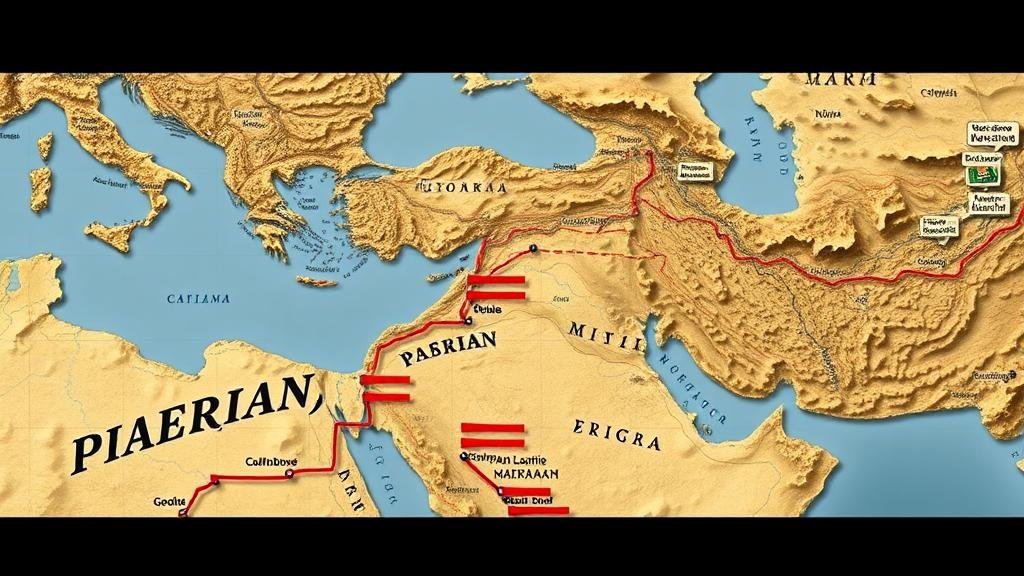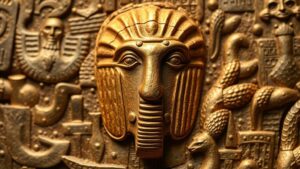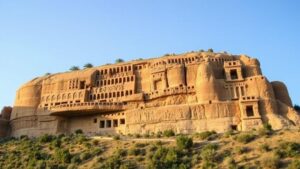Tracing Persian military routes to uncover hidden outposts and lost capitals.
Tracing Persian Military Routes to Uncover Hidden Outposts and Lost Capitals
The ancient Persian Empire, at its height in the 5th century BCE, spanned three continents, covering parts of modern-day Iran, Iraq, Turkey, and beyond. Its extensive network of military routes was instrumental for communication, trade, and the movement of troops. Today, tracing these routes could illuminate hidden outposts and lost capitals, shedding light on the strategic and logistical prowess of one of historys great empires.
The Historical Context of Persian Military Strategies
The Achaemenid Empire (c. 550-330 BCE) employed a sophisticated approach to military logistics. King Cyrus the Great initiated the establishment of routes that would later be refined by his successors, including Darius I and Xerxes I. These routes facilitated not only military campaigns but also the efficient administration of the vast empire.
One notable example is the Royal Road, which stretched approximately 2,500 kilometers from Sardis (in present-day Turkey) to Susa (in Iran). This road allowed for swift communication and troop movement, reducing travel time significantly–couriers could traverse the distance in just seven days. This level of organization was unprecedented for its time.
Uncovering Hidden Outposts through Archaeological Evidence
Recent archaeological efforts have focused on identifying ancient Persian outposts along these military routes. For example, the discovery of fortifications in what is now northern Iraq indicates that outposts were strategically placed to control trade and military movements.
In 2018, archaeologists uncovered what they believe to be a Persian outpost near the ancient city of Nineveh, dating back to the 7th century BCE. This site included remnants of watchtowers and stables, suggesting it served both military and logistical roles. The presence of pottery and weaponry aligned with they known Persian styles further supports this hypothesis.
Mapping Lost Capitals
Another critical aspect of researching Persian military routes is the identification of lost capitals. The city of Pasargadae, founded by Cyrus, is known as the first capital of the Achaemenid Empire. But, many historians believe there are additional capitals yet to be discovered.
Recent advances in satellite imaging technology have enabled researchers to explore potential sites beneath modern-day landscapes. In 2020, a study utilizing high-resolution satellite images revealed structures that could indicate the layout of a capital city in the region of Kermanshah, historically relevant during the reigns of Darius I and Xerxes I. This site may further enrich our understanding of the Persian administrative system.
The Role of Technology in Discovery
Modern technology plays a crucial role in tracing Persian military routes and uncovering lost sites. Techniques such as LiDAR (Light Detection and Ranging) allow researchers to detect changes in terrain that could signify ancient construction. This method has been particularly useful in Peru and Mesoamerica, but its application is expanding to ancient Persian sites.
- LiDAR has revealed previously unidentifiable structures in dense vegetation.
- GIS (Geographic Information Systems) helps in mapping and analyzing ancient trade routes alongside military paths.
Real-World Applications and Implications
The insights gained from tracing Persian military routes have broader applications in historical research, tourism, and even modern military strategy. For example, understanding logistics from historical empires can inform contemporary military planning and operations, focusing on efficient troop movement and resource allocation.
Also, archaeological sites once identified, can become focal points for cultural tourism, driving interest in the history of the Persian Empire and boosting local economies.
Conclusion: The Path Forward
Tracing the military routes of the Persian Empire not only provides a glimpse into the past but also opens pathways to discovering lost capitals and hidden outposts. Through the combination of archaeology, technology, and historical inquiry, researchers are steadily piecing together a more comprehensive understanding of one of historys most fascinating civilizations.
As studies continue, the legacy of the Persians strategic ingenuity will reveal even more secrets, enriching our comprehension of ancient military logistics and their impacts on modern understanding of statecraft.


